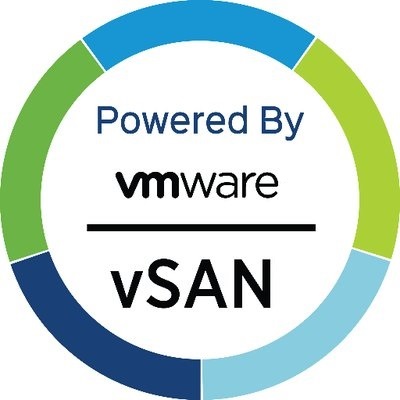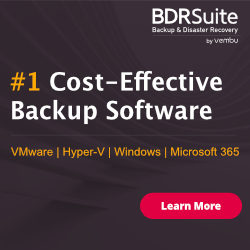
VMware vSAN is hyper-converged, software-defined storage (SDS) platform that is fully integrated with vSphere. vSAN aggregates locally attached disks of hosts that are members of a vSphere cluster, to create a distributed shared storage solution. vSAN enables the rapid provisioning of storage within VMware vCenter as part of virtual machine creation and deployment operations. vSAN is the first policy-driven storage product designed for vSphere environments that simplifies and streamlines storage provisioning and management. Using VM-level storage policies, vSAN automatically and dynamically matches requirements with underlying storage resources. With vSAN, many manual storage tasks are automated – delivering a more efficient and cost-effective operational model. vSAN provides two different configuration options, a hybrid configuration that leverages both flash-based devices and magnetic disks, and an all-flash configuration. The hybrid configuration uses server-based flash devices to provide a cache layer for optimal performance while using magnetic disks to provide capacity and persistent data storage. The all-flash configuration uses flash for both the caching and capacity layers to deliver enterprise performance with resiliency.
vSAN is a critical component of the VMware Digital Foundation, a ubiquitous control plane from edge to core to cloud, which provides organizations leading agility and availability with a turn-key hybrid cloud architecture. VMware Hyperconverged Infrastructure (HCI) supports more hybrid cloud use cases than any other solution today. vSAN 6.7 Update 1 makes it easy to adopt hyper-converged infrastructure through simplified operations that accelerate time-to-value for day one and two tasks. This release also uses infrastructure more efficiently through automated space reclamation, which lowers storage total cost of ownership. ReadyCare expedites resolution by diagnosing issues faster and enhances self-help with centralized health monitoring.
VMware HCI supports six important hybrid cloud use cases today:
Backup and Disaster Recovery
Test & Dev
Multicloud workloads
App Development
Multicloud management
Mode 1 applications.
The most significant new capabilities and updates of vSAN 6.7 Update 1 include
Guided HCI Cluster Creation and Extension: A new guided cluster creation and extension workflow provide an exhaustive wizard to assist the admin with day one and two operations. This workflow gives the admin confidence that all steps have been done in the proper sequence to stand up a cluster. It also includes stretched clusters.
VUM Based Firmware and Driver Update: VUM gives admins confidence that they are performing consistent lifecycle management across the cluster. This update automates the patching of host IO controller firmware and drivers for Dell, Fujitsu, SuperMicro and Lenovo ReadyNodes. Health checks now alert customers to new patch availability. VUM provides automated patch management for an HCI cluster and manages both compute and storage firmware from vCenter.
Intelligent Maintenance Mode: Intelligent maintenance mode ensures consistent application performance and resiliency during maintenance operations. vSAN provides guardrails by advising users when entering a host into maintenance mode may affect performance, and proactively fails maintenance mode if it is not predicted to succeed.
PowerCLI and SPBM Enhancements: vSAN gains new advanced cluster settings in the UI and new cmdlets in Power CLI. In addition, vSAN automates backup and recovery of SPBM policies in scenarios where vCenter is replaced or recovered after a failure.
UNMAP Integration for Storage Efficiency: UNMAP automates space reclamation, reducing capacity used by applications. vSAN integrates with guest OS initiated SCSI UMAP requests, freeing space when guest OS files are deleted or truncated. In addition, this feature avoids de-staging of unused data in the capacity tier.
Mixed MTU with Witness Traffic Separation: Enables flexible network topographies in stretched cluster scenarios. This allows the witness to have a lower MTU than vSAN data traffic, allowing businesses to protect their investments in network infrastructure.
Health Service Enhancements: Health service enhancements expedite self-help so customers can quickly resolve issues. Updates in this release include a proactive network performance test, ability to silence health checks from the UI, reduction in false positives for some health checks, and a health check summary with shows the status of all health checks in a single location with a brief description and proposed action item for each.
“Be social and share this on social media, if you feel this is worth sharing it”


